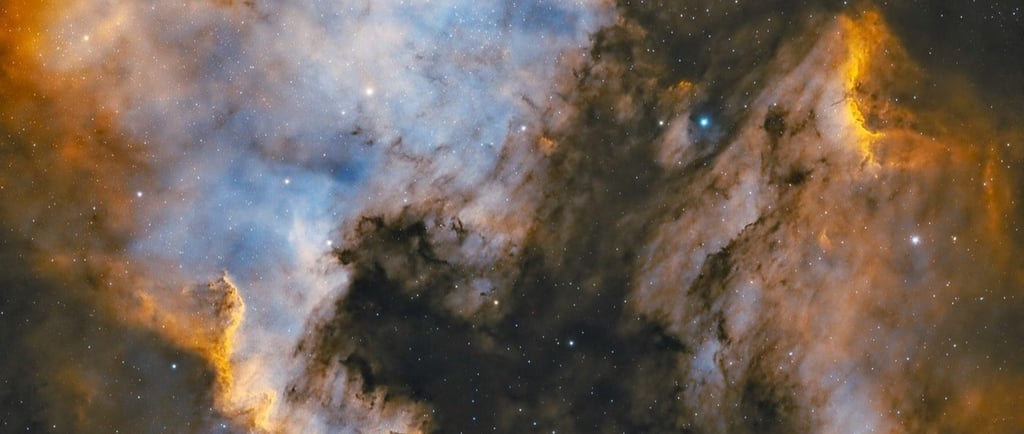IC 5070: The Pelican Nebula


Introduction to the Pelican Nebula
Located within the vast expanse of the North America Nebula, the Pelican Nebula stands as a striking example of an H II region. Found in the constellation of Cygnus, this emission nebula is renowned for its intricate gaseous formations that bear a resemblance to a pelican. This remarkable celestial body not only captivates astronomers but also enriches our understanding of star formation within the cosmos.
The Characteristics of the Pelican Nebula
The Pelican Nebula, cataloged as IC 5070, is predominantly composed of hydrogen gas, much of which is ionized. This ionization occurs when the high-energy radiation from nearby hot stars interacts with the surrounding material. The nebula's structure is formed by various filaments and knots of gas, creating visually stunning patterns that have earned the Pelican Nebula its avian namesake. As a significant H II region, it serves as a stellar nursery, where new stars are born from the collapsing clouds of gas and dust.
Observing the Pelican Nebula
Astronomers and stargazers alike are drawn to the Pelican Nebula for its ethereal beauty and scientific importance. It is best observed during the summer months when the constellation Cygnus is prominently visible in the night sky. Using telescopes equipped with specialized filters, enthusiasts can capture vivid images of this nebula, highlighting its glowing filaments and dark dust lanes. Amateur astronomers often utilize narrowband techniques to enhance the visual contrast between the ionized gas and the surrounding dust, allowing for even more stunning representations of this nebula.
Additionally, the Pelican Nebula offers researchers valuable insights into the processes of star formation and the conditions present in distant regions of space. By studying the nebula's emission lines and stellar population, scientists can glean information about the age and evolution of its stars, making it a significant target for both observational and theoretical astrophysics.
Conclusion
The Pelican Nebula is not merely a beautiful feature in the constellations but a window into the dynamic processes that shape our universe. Its glimmering gases and intricate structures serve as a reminder of the complexities of stellar evolution. As we continue to advance our technological capabilities in astronomy, the Pelican Nebula will remain at the forefront of our exploration and understanding of the cosmic phenomena that define our night sky.
